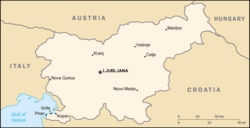
Modern Slovenia is a small European country in the Balkan Peninsula, sandwiched between Austria to the north, Hungary to the northeast, Croatia to the south and southeast, and Italy and the Adriatic Sea to the west.
With a population[1] of just over two million and a land area[2] of about 20,000 km2 (half the size of Switzerland) it rarely figures in the daily news. But successive waves of migration over the 19th and even more so the 20th century means that people with Slovene (or Slovenian -- the descriptor is used interchangeably) roots are scattered throughout neighboring European countries as well as further afield, particularly in new world immigrant destinations such as USA, Canada, Australia, and Argentina. Due to this diaspora, many more people than currently live in Slovenia have a Slovene connection in their past.
History complicates finding your Slovene ancestors
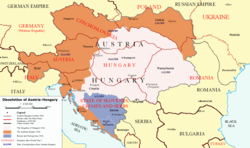
Slovenia’s tumultuous history[3] can pose significant challenges in tracing family members who came from or still live there.
Apart from a brief interregnum of Napoleonic rule in the early 19th century, Slovenia was a part of the Austrian Hapsburg Empire, from 1335 to 1918. Between the two World Wars, the bulk of Slovenia was incorporated into the Kingdom of Serbs, Croats, and Slovenes (renamed the Kingdom of Yugoslavia in 1929). Meanwhile, Primorska, the western-most (Littoral) region of Slovenia, was ceded to Italy after World War I. This was the result of a promise by the Western Allies made in a secret 1915 treaty[4] to entice Italy to join them in the fight against Germany and Austria during the War.
After World War II, Primorska was returned to Slovenian sovereignty and Slovenia as a whole became one of the constituent parts of the new Socialist (Communist) Republic of Yugoslavia. This resulted in a new wave of immigration as many Slovenes for economic or political reasons escaped across the country's western borders, mainly to Italy[5]. They became “Displaced Persons”, most later leaving Europe altogether in search of a new life. With the breakup of Yugoslavia, Slovenia finally was able to declare its independence in 1991, starting another new chapter in its history.
For the researcher, the practical effect of all this turmoil is that Slovene genealogical records can be scattered across multiple national jurisdictions and recorded in different languages, especially Italian and German, as well as Slovene.
How the Catholic Church can help research Slovene heritage
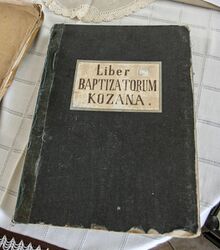
In addition to promoting its religion the Roman Catholic church was instrumental in promoting Slovene culture and a sense of national identity--important in a small country always feeling under threat[6].
Roman Catholicism is still Slovenia's predominant religion. Today around 60% of Slovenes adhere to this faith, down from 80% in 1990. This is due to a continuing influx of Muslim and Orthodox Christian immigrants[7]. But going back to earlier times almost all Slovenes were raised as Catholics.
This is a boon for family history researchers as it means that major personal events -– births, christenings, marriages, and deaths – are recorded in Catholic Church records. These are typically well-preserved and accessible. Better still in earlier times many Slovenes, especially those in rural areas, lived their whole lives in the same small region. It is often possible to find relevant details of a wide range of family ancestors over multiple generations in the records of the local Catholic church closest to where these people lived. Unfortunately, many of these records have not yet been digitized, so a physical visit to the church may still be required. But if you can visit or send someone on your behalf, the trip is likely to be very rewarding.
Slovene surnames
See also: Slovene surnames
Tracing your Slovene ancestors often begins with understanding how names may have been recorded in official records or changed as Slovenes adapted to their new lives in foreign countries.
House or Field names are a further obstacle that family researchers may come across when investigating their Slovene ancestors.
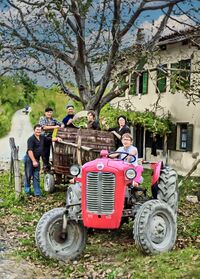
These names are a by-product of the feudal land ownership system that existed in Slovene territory for several centuries. In 1848-49 the Austro-Hungarian Parliament abolished feudalism, allowing peasants to purchase the land they worked from their lords. But the old land tenancy arrangements survived in many rural areas of Slovenia into the 20th century. Before World War I, and even during the interwar years, many Slovene farmers did not own their own land. In addition to the holdings of the numerous “counts” (the local nobility) the Catholic Church also owned great tracts of land. There were clear class divisions among locals depending on whether they owned land or were tenant farmers. At the bottom of the heap were itinerant laborers. Even after farmers gained land ownership, marriages between different families in the same village and the fact that most families had many children meant that land holdings quickly became fragmented[8].
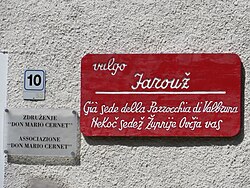
So arose the tradition of "house" or "Field" names[9]. Individual dwellings or specific agricultural plots were often given a distinct name, reflecting the original owner or some specific characteristic of the item, such as its location. The "house" name never changed -- it became a sort of permanent address. Over time this name came to be associated with, or was adopted by, the family or families that lived in that dwelling or worked that land. In rural areas, this particularly applied to tenant farmers living in houses on land owned by the local nobility or the Church.
Examples of house names include Kuraževe and Baštjanavi (associated with the surname Jakin), Tinavi (surname Čadež), and Mirkavi (surname Mavrič). A joint Austria-Slovenia effort is being made to document and preserve these names as an important cultural tradition, with more than 26,000 individual names[10] having been identified by 2020.
The existence of house names can be confusing for a genealogist trying to track Slovene family history as they can appear alongside, or occasionally instead of, the usual surname in some older records. Likewise older Slovene relatives might also make reference to a house name when describing their own family history.
Where to start?
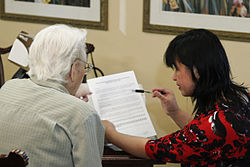
When the time comes to explore your Slovene roots, a great place to start is simply to put down on paper everything you know about your parents, their siblings, and their town or village of birth in Slovenia. Assemble all the relevant family documents you have. Then work back one generation at a time. Seek the help of relatives and family friends. A great strategy is to sit down with older relatives and a pile of family photographs—you will often be surprised how much they will remember using the photographs as memory prompts.
Explore more about Slovene research
MyHeritage has a variety of resources where you can begin your Slovenia research. For example there are more than 1 million individuals born in Slovenia in tens of thousands of family trees created by MyHeritage members.
Beyond MyHeritage, other Slovene-specific genealogical resources include:
- State Portal of the Republic of Slovenia. The central website for access to comprehensive information on the organisation and functioning of Slovenia's state administration. In English.
- Slovenian Public Archival Network This government website provides access to rare material such as historical archival documents created by land seigniories, families, or individuals who were important for the course of Slovenian history as far back as the 13th century. It also links regional archival collections across Slovenia as well as a limited number of Slovenian church archives. In English.
- Digital Library of Slovenia Provides digital copies of many Slovene historical newspapers, books, manuscripts, and magazines as well as images, maps, and music. Many sections are full-text searchable and free. You will be surprised how often old newspapers will contain stories about particular ancestors you are interested in. Home pages and search tools are available in English, although the source material itself is in the Slovene language.
- Slovene Ethnographic Museum Covers Slovenia's cultural heritage in both everyday and festive life. Includes a wonderful collection of historical photographs (searchable), giving locations, dates, and people in the photographs. If you are lucky, you might even find a photo of an old relative! English and Slovene versions available.
References
- ↑ “Slovenia Population (Live).” Worldometer
- ↑ “Size of Slovenia Compared to Switzerland.” MyLifeElsewhere
- ↑ “History of Slovenia.” Wikipedia, Wikimedia Foundation, 10 Apr. 2023
- ↑ “Treaty of London (1915).” Wikipedia, Wikimedia Foundation, 4 Mar. 2023
- ↑ Maurice, Daniel. “A New Life as ‘New Australians’, Maurice-Robinson Family, 8 July 2021
- ↑ Kocjančič, C. (1997). Slovene identity: The Canadian experience
- ↑ “Religion of Slovenia.” Encyclopædia Britannica, Encyclopædia Britannica, Inc.
- ↑ Panjek, Aleksander. “Feudal Economy in Early Modern Western Slovenia.” FEUDAL ECONOMY IN EARLY MODERN WESTERN SLOVENIA, Zdjp.si, 17 Sept. 2009.
- ↑ AnnaInSlovenia. “House Name, Part of a Slovenian Cultural Heritage!” Anna in Slovenia, 26 Sept. 2016
- ↑ “Slovene Field and House Names.” Wikipedia, Wikimedia Foundation, 19 May 2022